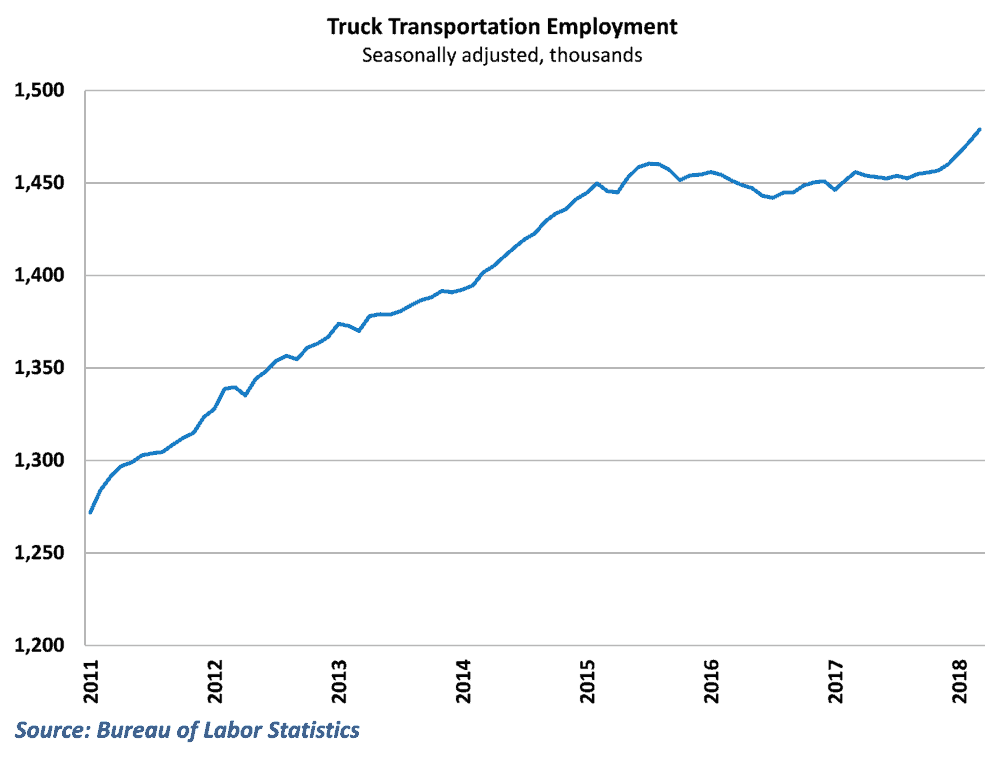The pace of hiring in the US slipped in March but unemployment remained near historically low levels and wage growth improved in a sign that the labor market remains generally healthy in the economy
The Bureau of Labor Statistics reported that employers added just 103,000 workers to payrolls during the month, falling short of consensus estimates of an 185,000 job gain. In addition, results from the previous two months were revised downward by a combined 50,000, making the gains at the start of year look slightly less impressive.
All was not disappointing in this morning’s report however, as the unemployment rate in the economy held at 4.1% for the sixth consecutive month, matching the lowest rate in the economy since 2000. In addition, average hourly earnings saw a solid gain during the month, pushing year-over-year wage growth to 2.7%.
Slower hiring ahead as the labor market tightens
One month of disappointing job growth is not enough to raise significant concerns over the health of the labor market however. The payroll employment numbers can be volatile and are often subject to large revisions. Overall, hiring in the economy has been generally solid, with average growth of nearly 180,000 jobs added each month for the past year.
Still, there is good reason to believe that the pace of hiring overall in the economy may slow going forward. The unemployment rate is already low by historical standards, and even broader measures that include sidelined workers are returning to more normal levels. This would suggest that most of the slack that existed in the years following the recession has been absorbed already. The average pace of hiring has been gradually slowing since 2015, and will likely continue this trend in upcoming quarters as it becomes more and more difficult to find available workers. (Story continued below)

Trends in freight hiring
Freight companies, of course, understand the challenges of finding qualified available workers, as carriers often struggle to find drivers to meet demand. In response, many trucking companies have stepped up efforts to recruit new drivers, offering higher wages and improved benefits to help address the current capacity crunch.

Hiring trends in the trucking industry would suggest that these efforts are paying some dividends. Despite the weak overall job growth during the month, truck transportation hires rose by 6,700 in March, marking the largest monthly gain since a brief spike in 2015. Moreover, the number of trucking hires has improved in each of the past five months.
There is still more that needs to be done, however, as solid economic growth and tighter regulations have only worsened the driver shortage. The ATA estimates that there will be a shortage of over 60,000 for-hire, over the road drivers by the end 2018, as stimulus from the government paves the way for increased freight demand. Still, the acceleration in hiring for the industry is a step in the right direction.
Behind the numbers
Overall, the jobs report was a disappointment, but not a disaster. Weak single months happen frequently in the employment releases, and other data on labor market activity (job openings, labor turnover, jobless claims) all say that the job market is fine. If anything, the softness in March serves as a way to rein in some of the optimism after the blockbuster results in February.
The data on truck hires gives a kind of glimpse into what would be expected from the economy overall at some point. Carriers are finding it tough to find enough workers to fill available jobs, so they begin instituting wage and benefit increases to lure workers off the sidelines and attract workers from other industries. The kinds of situations are begging to crop up in other industries as well, as areas like construction and manufacturing are experience similar challenges with qualified labor. As the overall labor market continues to tighten, it will be interesting to see if trucking is able to maintain this acceleration in hiring or they find themselves out of workers to lure into the business.
Ibrahiim Bayaan is FreightWaves’ Chief Economist. He writes regularly on all aspects of the economy and provides context with original research and analytics on freight market trends. Never miss his commentary by subscribing.










